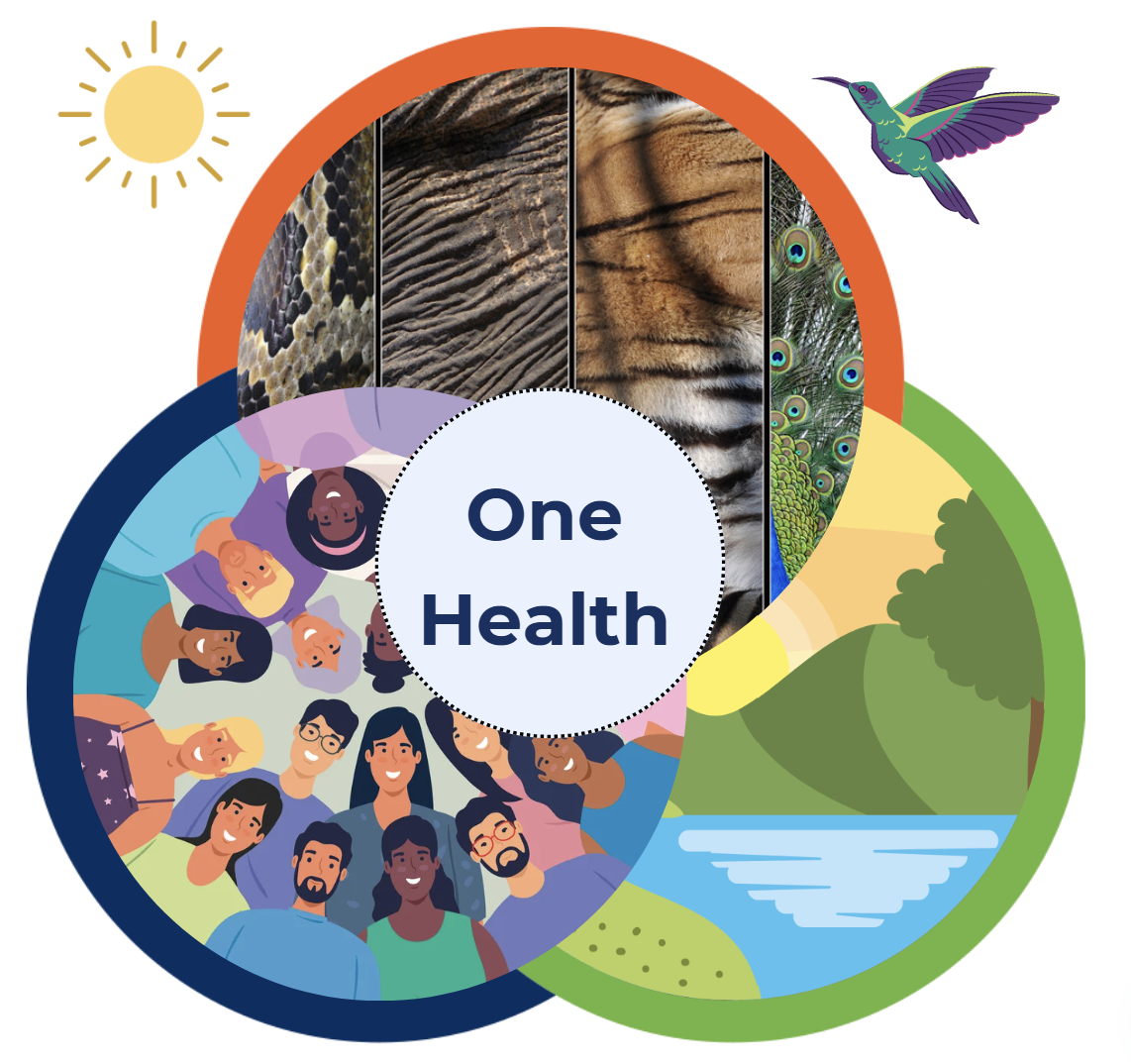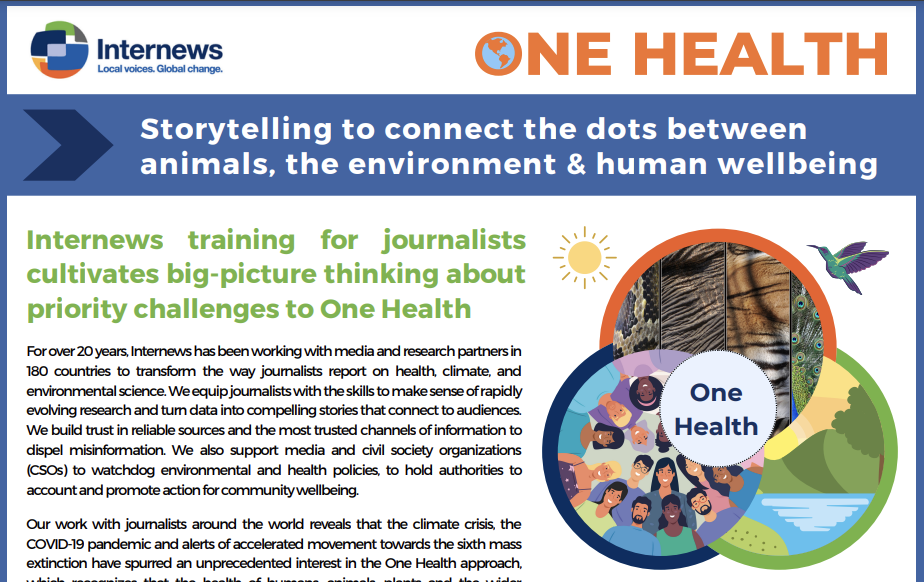
The CDC defines One Health as “a collaborative, multisectoral, and transdisciplinary approach — working at the local, regional, national, and global levels — with the goal of achieving optimal health outcomes recognizing the interconnection between people, animals, plants, and their shared environment.”
A paper published on the National Library of Medicine’s PubMed portal defines One Health as “any added value in terms of human and animal lives saved, reduced cost and sustained social and environmental services that can be achieved by a closer cooperation of human and animal health and other disciplines which could not be achieved if the sectors worked separately.”
One health and the climate change link
Climate change significantly affects each of these interlinked elements, which in turn has an impact on the overall One Health framework. Here are some ways climate change impacts the One Health approach:
Human health
Climate change can directly impact human health in various ways, including heat-related illnesses, respiratory problems from air pollution, waterborne diseases from contaminated water sources, vector-borne diseases such as malaria and dengue fever, and mental health impacts from extreme weather events. Indirectly, climate change can worsen food insecurity and malnutrition which lead to long-term health consequences. We will explore these areas in more depth in the next section and module.
Animal health
Climate change affects the health and well-being of animals too. Changes in temperature and precipitation patterns can alter the distribution of disease vectors and pathogens, affecting the spread of infectious diseases among animals. Also, climate-related events such as droughts, floods, and wildfires can disrupt ecosystems, leading to habitat loss, changes in species distributions, and increased competition for resources among wildlife.
These changes can impact the health of both domesticated and wild animals. As of 2024, three out of four emerging infectious diseases are zoonotic in nature – meaning that they originated in animals. Human-activity driven factors such as climate change, urbanization, animal migration and trade, travel and tourism continue to influence and increase the emergence, re-emergence, distribution and patterns of zoonotic diseases.
Here is an example of how armed conflict can fuel zoonosis. In correspondence to The Lancet medical journal Yassir Adam Shuaib from the Department of Preventive Veterinary Medicine and Public Health, at the Sudan University of Science and Technology, said armed conflict in Sudan has interrupted veterinary health services, creating an environment suitable for the spread of zoonotic diseases.
Environmental health
As we saw in the previous module climate change influences environmental factors such as temperature, precipitation, air quality, water quality, and ecosystem robustness. Changes in these factors can have a domino effect on human and animal health. The WHO promotes a multidisciplinary approach as the best way for researchers and countries to tackle the effects of climate change on humans, animals and the environment. This means public health agencies, veterinary services, environmental organizations, policymakers, and communities need to work together to develop and implement strategies for climate adaptation, mitigation, and resilience-building that prioritises one health.
One Health is more than a mere buzzword
If journalists are to make a positive contribution to saving our ailing planet, the One Health approach needs to be reflected in reporting. Journalists can do this by making sure that human, animal, and environmental health questions are looked at holistically, and understanding that each element affects the other. By making the connections for our audiences we can give a more comprehensive understanding of the problem and potential solutions, rather than just a siloed approach.
Informed, powerful journalism on One Health topics can shape global and local agendas and mobilize remedial actions by policymakers and the public alike. The Internews approach to supporting journalists to produce One Health stories of high quality is based on six broad principles, which are explored in this downloadable PDF resource:
Final word…
If our planet were a patient, it would be admitted to intensive care. Its vital signs are alarming. It is running a fever, with each of the last nine months the hottest on record, as we hurtle towards the 1.5 degree threshold. Its lung capacity is compromised, with the destruction of forests that absorb carbon dioxide and produce oxygen. And many of the earth’s water sources – its lifeblood – are contaminated. Most concerning of all, its condition is deteriorating rapidly. Is it any wonder, then, that human health is suffering, when the health of the planet on which we depend is in peril? — Dr Tedros Adhanom Ghebreyesus WHO Director-General speaking at the 6th session of the UN Environmental Assembly in Nairobi, Kenya on 29 February 2024.






